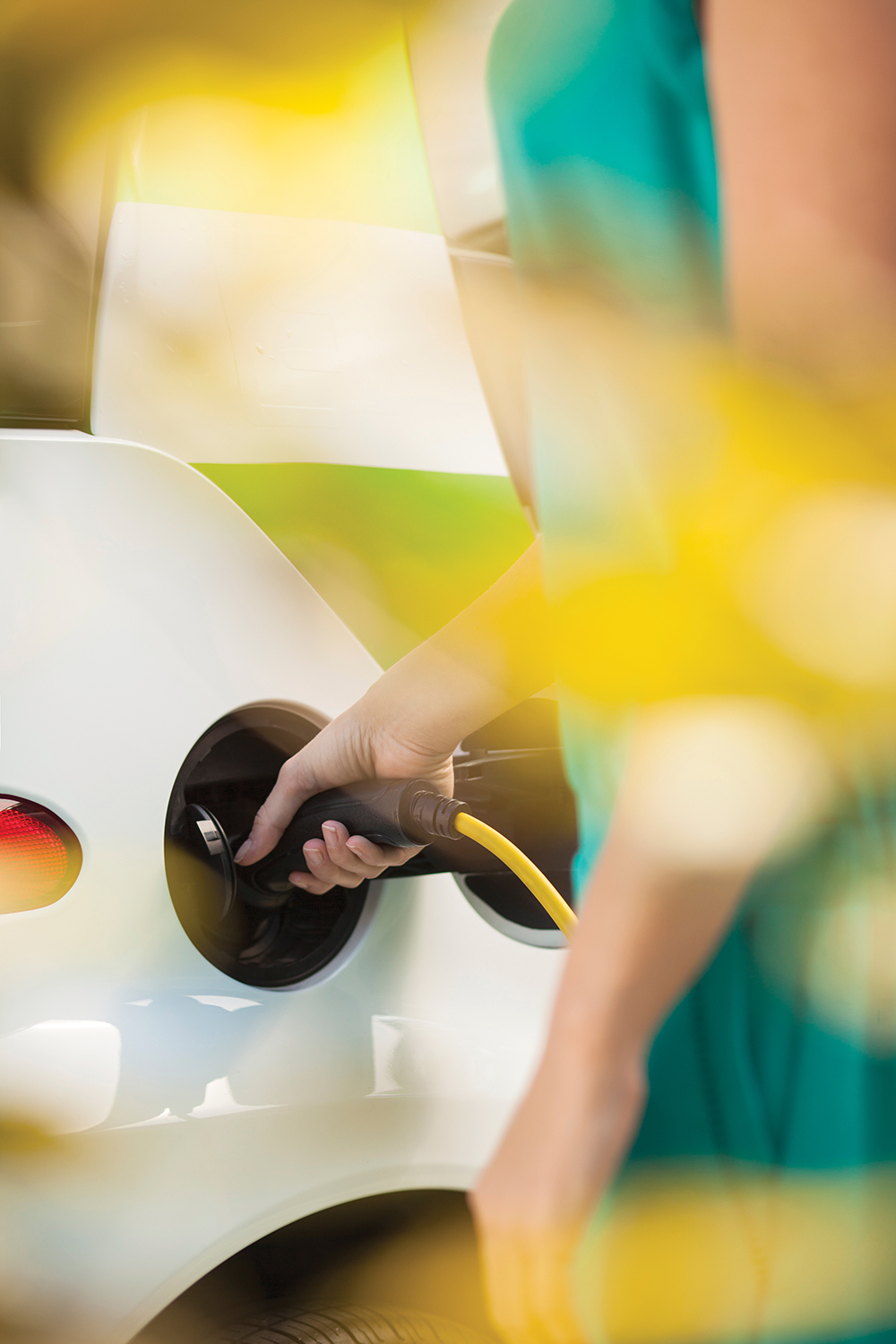As the world’s leading chemical companies, that for decades have made catalysts that remove polluting substances from vehicle exhausts, switch their focus to become key players in powering electric cars of the future, we look at the efforts in place to ensure the UK is at the forefront of this transformation and the supply chain opportunities it presents.
Worldwide sales of pure electric vehicles grew by 45 per cent last year and the International Energy Agency estimates that there will be between 9m and 20m electric vehicles on the road by 2020 and between 40m and 70m by 2035 – by which point it is estimated to be a £5bn market opportunity in the UK and £50bn across Europe.
Big chemical players, such as Umicore in Belgium, chemical giant, BASF, and UK-listed Johnson Matthey are now preparing for the eventual decline of traditional internal combustion engines. All three hopes to capture the growth in demand for components used in rechargeable lithium-ion cells and are planning to explain production of cathode materials, critical in increasing the amount of power a battery can deliver.
Most recently, UK-based chemicals group, Johnson Matthey – which is one of the world’s largest suppliers of catalytic converters – announced plans to build a battery materials demonstration plant in the UK with double the originally expected production capacity, as well as a £200m commercial plant in Europe with the aim of commercial production by 2021.
The post-Brexit opportunity
Electric vehicles have been identified as a key post-Brexit manufacturing opportunity for the UK, with one in five electrical vehicles driven in Europe produced in the UK. Several manufacturers have sizable facilities including Nissan in Sunderland and Jaguar Land Rover in the Midlands.
In November 2017, Greg Clarke, Secretary of State for Business, Energy and Industrial Strategy, announced £80m of funding to establish a National Battery Manufacturing Development Facility.
As part of the Automotive Sector Deal included in the recent Industrial Strategy, the battery facility is part of efforts to place the UK at the forefront of the global energy storage market. It will be responsible for turning the most promising early and mid-stage research and development practices into scalable and commercially viable propositions.
Mr Clarke said: “Battery technology is one of the most game-changing forms of energy innovation and it is one of the cornerstones of our ambition, through the industrial strategy and the Faraday Challenge, to ensure that the UK leads the world, and reaps the economic benefits, in the global transition to a low carbon economy.”
Further monies will be injected to tackle the biggest challenges including key technologies such as the development of battery materials and cell manufacturing; design and production of modules and packs including advances in thermal management and battery management systems and of course, recycling and the recyclability of battery packs.
Chemical supply chain for battery manufacture
The rise of battery manufacturing in the UK will lead to a significant number of opportunities in the supply chain. These opportunities will cover several key areas – some specific to battery manufacturing and other more generic in terms of process design, control and instrumentation, engineering and other service and support functions. The battery specific opportunities are likely to focus around chemicals supply, injection moulding, waste disposal and software development.
Lithium-Ion Battery (LIB) is a generic term for batteries whose electric and chemical properties depend on lithium. LIB cells are comprised of four main components – cathodes, anodes, separators and electrolytes – inserted in various container types. Cathodes, anodes and separators take the form of sheets, and wound or stacked to form alternating layers of cathode-separators-anode, with ions flowing between the cathode and anode sheets via an electrolyte solution.
LIB’s are primarily utilised in consumer electronics applications due to their high energy density and lifecycle. Their high potential power output also makes them well-suited to automotive applications. Its value chain comprises of raw and processed materials; electrodes; cells and battery pack – which together generate quite a shopping list of common chemicals, materials and processes.
The Faraday Challenge
The Faraday Challenge is a £246m commitment from Government to battery development for the automotive electrification market opportunity. Over the next four years it will provide a new ‘application-inspired’ research programme coordinated at national scale and an innovation programme to support collaborative research and development with co-investment from industry. Furthermore, a scale-up programme to allow companies of all sizes to rapidly move new battery technologies to market.
The UK has world class expertise across a range of areas in battery science and has already built a significant number of research networks and pilot facilities upon which this challenge will build.
Compatible infrastructure and a unified transport and energy system are also critical to electric vehicle uptake. The recently launched £20 million Vehicle-to-Grid (V2G) competition seeks to support this by funding projects which aid the interaction between electric vehicles and the grid, paving the way for widespread adoption of electric vehicles.
This is a comprehensive research, innovation and scale up programme, focussed on batteries from their raw materials and electrochemistry to end of life treatment, encompassing cell manufacture, modules, battery pack design and assemblies, and vehicle application.
By any scale this is a game changing investment in the UK and will make people around the globe take notice of what the UK is preparing for in terms of electric vehicle introduction.
The movement from the internal combustion engine to an electric vehicle is transformative. It’s entirely different technology and at present an entirely different cost structure. This poses both risks but also huge opportunities for the UK economy.
The programme will develop safe, cost effective, durable, lighter weight, high performing and recyclable batteries which will power the next generation of electric vehicles. This will involve businesses with a wide range of materials and manufacturing capabilities from across different sectors, creating a new supply chain to support battery production in the UK at scale.
Alongside this there is legislation moving through Parliament, the Vehicle Technology and Aviation Bill, which will pave the way for autonomous and connected driverless cars. The UK is at the forefront of legislative and regulatory change in order to enable this technology to be deployed in the UK which will be based on electric and Ultra Low Emission vehicles.
Over the coming months NEPIC will continue to work closely with the Chemistry Growth Partnership, Innovate UK, Warwick Manufacturing Group and the Faraday Challenge to ensure our members are geared and ready to take advantage of this significant opportunity.
www.nepic.co.uk














